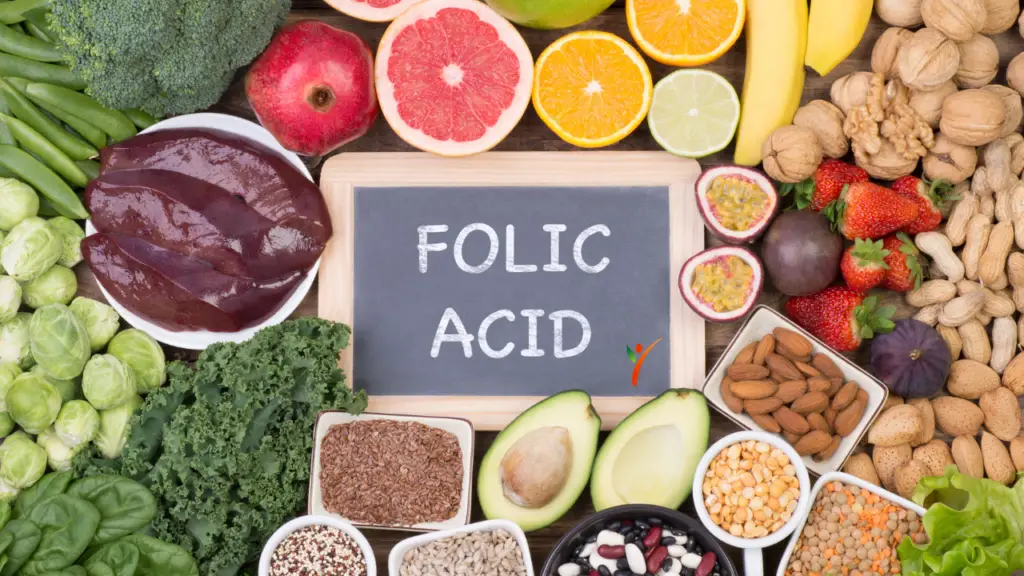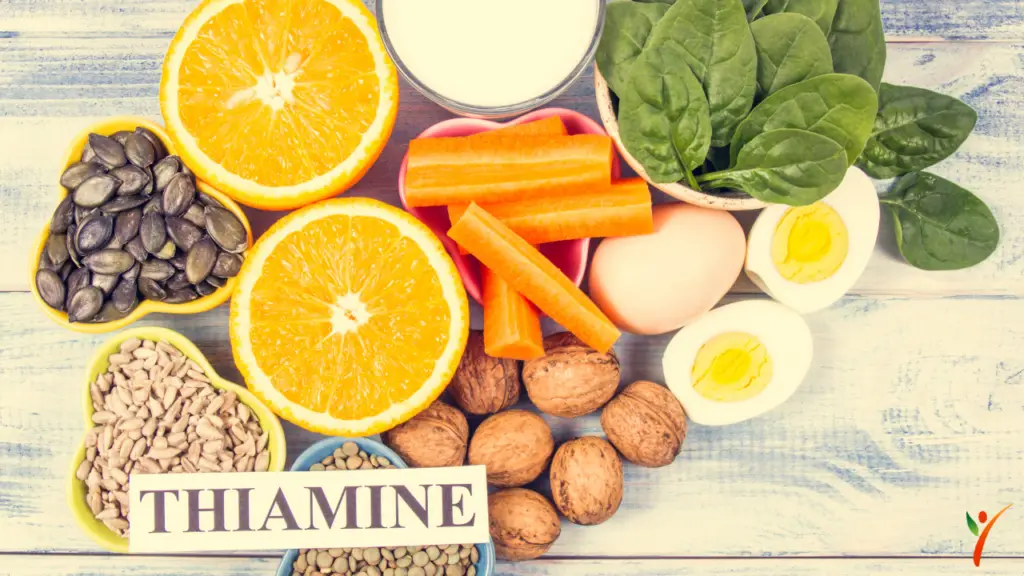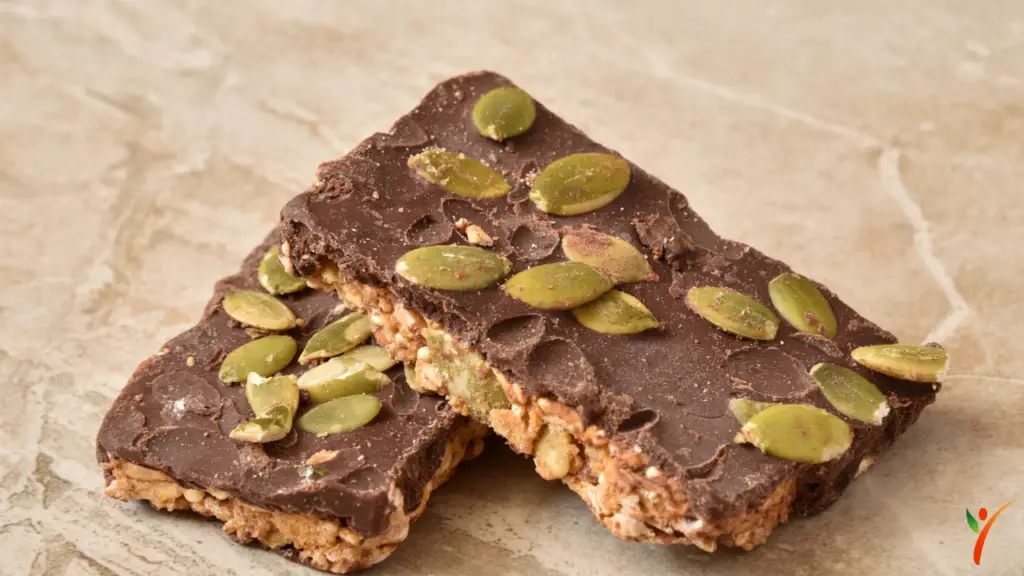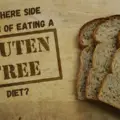We've all heard about how vitamins and nutrients are essential for our health. They're even considered one of the most integral biochemicals our bodies require. But, since gluten-free dieters need to exempt every gluten-containing ingredient there is, do they get enough of these essential nutrients?
Here's the complete guide to attaining vitamins and nutrients on a gluten-free diet:
What are Vitamins?

In definition, vitamins are a group of organic micronutrients required in small quantities for normal body functioning. These are not a basic necessity but are vital and significant if one wants to live a healthy life.
Thus, vitamins are an essential nutrient, i.e., the body cannot synthesize these, making a vitamin-rich diet is necessary. Adding vitamins to your everyday diet and meeting the minimum daily requirement can prevent deficiency diseases.
There are 13 main types of vitamins, categorized into two types based on their solubility. Vitamins A, D, E, and K are fat-soluble. Meanwhile, the remaining vitamins, which include the B vitamins and vitamin C, are water-soluble.
In B vitamins, there are eight different types, and a number specifies each. Thus, vitamins B1, B2, B3, B5, B6, B7, B9, and B12 make up the vitamin B complex.
Vitamins are required in a narrow range as both deficiency and surplus can be harmful to health. A higher-than-normal quantity level of a vitamin is called vitamin toxicity. Each vitamin has its characteristic functions, required body level, and symptoms related to deficiency and toxicity.
Except, a gluten-free diet doesn't affect the intake of every vitamin. For this reason, we'll highlight the ones that are affected.
Malabsorption and Vitamin Deficiency

Malabsorption is the leading cause of vitamin deficiency in a person suffering from gluten sensitivity and celiac disease. Studies have shown that with an untimely diagnosis of gluten sensitivity, the patients suffer from vitamin deficiencies. What happens is that the continuous intake of gluten before diagnosis tends to damage the small intestine.
There are tiny finger-like projections in the intestine, known as villi, which increase the surface area for vitamin absorption. If a patient suffering from gluten sensitivity or celiac disease eats a gluten-containing meal, the immune system accidentally attacks these villi. Thus, causing intense damage to the villi.
When gluten destroys these sites of vitamin absorption, many of these nutrients pass out of the body. Hence, the vitamins pass out while alongside the undigested food, which leads to vitamin deficiency.
Due to this reason, even if your daily intake of vitamins meets the RDA value, you can still develop vitamin deficiency. In fact, in asymptomatic patients, vitamin deficiency can be the only distinctive symptom that can help diagnose gluten-related diseases.
Studies prove that vitamin deficiencies are more common in gluten-sensitive people as compared to the general population. Despite timely diagnosis and prevention of intestinal damage, the patient can still be vitamin deficient due to low dietary intake. Not all gluten-free diets meet the body's daily requirement of vitamins.
Folic Acid

Folic acid is not required in high amounts, so much so that the RDA for folate is measure in micrograms. For newborn babies between the age of 0-6 months, the daily requirement is 65 micrograms of folate. For babies between 7-12 months, 80 micrograms of folate daily are adequate. If a baby is 1-3 years old, 150 micrograms should be more than enough.
4-8-year-old children should not worry about folate deficiency if their daily intake is 200 micrograms. The RDA for a child 9-13 years of age is 300 micrograms. The daily intake of folate should not drop below 400 micrograms for age 14 and above.
A lactating woman should make sure her daily folate intake stays above 500 micrograms. During pregnancy, the RDA rises even higher to 600 micrograms.
Health benefits
If the body meets these minimum levels, folate can prove to be very beneficial. Folic acid helps produce both red and white blood cells in the bone marrow. It also assists in making RNA and DNA, along with using carbohydrates to make energy.
Deficiency
Folate deficiency can cause various complications. For instance, it can affect mental health and increases depression. Low folate levels result in a higher risk of developing cardiovascular diseases. The onset of breast cancer is higher in females who suffer from folate deficiency.
Gluten-Free Food Sources

A few servings of avocado can boost your folate intake. Kale and spinach are examples of leafy green vegetables that are rich in folate. Other green vegetables such as okra or asparagus are beneficial for this purpose as well. Other than broccoli, you can use Brussels sprouts and cauliflower.
Different legumes can also provide the required amounts of folate. Another few gluten-free sources of this vitamin are oranges, papaya, and strawberries. Or you can even add seeds and nuts to your menu.
Toxicity
If folate accumulates in the blood and rises to a high level, it can cause various complications. For instance, it can speed up mental retardation and decline with increasing age. It can mask B12 deficiency symptoms. There is also a small increase in cancer risk observed in some patients.
Thiamine

Thiamine or vitamin B1 can be deficient in celiac patients due to a couple of reasons. Another reason can be the high demand of the body during inflammation and autoimmune reaction upon gluten intake.
The primary function of vitamin B1 is energy production. The body uses a significant amount of energy for healing. Therefore, your body requires a higher amount of vitamin B1 during this period.
Deficiency
If the body cannot make up for the required amounts, it can result in thiamine deficiency. Certain drugs deplete the stores of thiamine, some of which are thiazide, digoxin, and furosemide.
Chronic alcohol consumption also causes thiamine deficiency. Low dietary intake can be due to the removal of conventional gluten-based bread and cereals from the diet.
Gluten-Free Food Sources

In gluten-free flour, 100 grams of amaranth flour contains 0.01mg of thiamine. Simultaneously, the same quantity of teff flour provides the body with 0.6mg of thiamine. Similarly, chestnut flour and oat flour contain 0.24 mg and 0.25 mg per 100 grams, respectively.
Various beans are a rich source of thiamine. One cup of lima beans or green peas fulfills the daily thiamine requirement. Other sources of thiamine include potatoes and acorn squash.
Pork, liver, and kidneys are also a rich source of vitamin B1. You can use green vegetables such as asparagus, broccoli, cabbage, and Brussel sprouts to fulfill the body's need for thiamine.
What are Minerals?

Minerals, like vitamins, are certain essential nutrients that our bodies need for proper normal functioning. Some minerals are required in larger amounts and are called macrominerals.
Meanwhile, the term for those recommended in lesser amounts is trace minerals. Each mineral has a characteristic function, RDA, deficiency disease, and sources of its own.
Mineral Deficiency, Gluten-Free Diet, and Malabsorption

Patients suffering from gluten sensitivity and celiac disease have to switch to a gluten-free diet. Therefore, they miss out on various nutrients while doing so. Included in these nutrients are minerals such as iron, calcium, zinc, and magnesium.
According to a study, people who follow a gluten-free diet quite often from deficiency of zinc, iron, magnesium, and calcium. This risk increases if you use highly refined gluten-free substitutes.
Moreover, mineral deficiency is also related to malabsorption due to the damaged small intestine. You cannot treat the mineral deficiency with a higher intake of minerals since the body will excrete most of it.
Iron

Iron is a very crucial mineral and has uses and benefits both directly and indirectly. For instance, iron is the main component of hemoglobin, which in turn makes blood. Blood transports nutrients, wastes, metabolites, and gases to and from different cells of the body. Deficiency of iron can thus lead to anemia directly and weakness, fatigue, and pale skin indirectly.
That being said, it is necessary to make sure your gluten-free diet fulfills the daily iron requirement. The daily requirement includes 16-18 mg and 12 mg per day for men and women, respectively.
Gluten-Free Food Sources
Animal sources of iron include poultry – eggs, chicken, turkey, and duck. You can eat organ meat such as the liver. Red meat is an incredible source of iron, which includes beef, lamb, and pork.
As far as the fish family goes, sardines, clams, anchovies, mussels, and oysters are another iron-rich option.
The cabbage family is a rich source of iron, especially broccoli, turnip greens, and kale alongside collards.
As compared to others, green and dry beans are better sources of iron, as are lima beans. Black-eyed peas are the most common and famous amongst the pea family.
A single cup of raw amaranth alone contains 15mg of iron, closely followed by teff, containing 14.7mg per cup.
Other whole grains, such as sorghum, quinoa, gluten-free oats, and millet, are also rich sources of iron.
Calcium

Like iron, calcium is also vital for good health. Being the most abundant mineral in the body, it has various functions. Ultimately, a deficiency of calcium will lead to severe complications.
There are numerous reasons, such as low intake, and even some drugs hamper calcium production and absorption. Thus, it is necessary to meet the minimum requirements while following a gluten-free diet. The RDA of calcium generally is about 700mg.
Gluten-Free Food Sources
200ml of semi-skimmed milk can provide us with as much as 244mg of calcium. Therefore, cheese is a rich source of calcium as 30 grams of cheddar cheese contains 220mg of calcium.
Another useful calcium source is calcium-enriched soya milk, as you can get 240mg of calcium from 200ml of it. You can get 170mg of calcium with 125 grams of pot yogurt.
Gluten-free sources of calcium also include kidney beans and baked beans. With every 120 grams of kidney beans, you can get 85mg of calcium. On the other hand, half a tin of baked beans contains 105mg.
Experts recommend eating almonds as a calcium-rich food, with 70mg of calcium in only 30 grams of almonds.
Recipe for Magnesium Rich Chocolate Bars

These yummy chocolate bars are easy to make and only take half an hour in the kitchen. Another benefit is that you can have a go at these even if you're following a Paleo diet.
Total Time- 25 minutes
Serving- 10 bars
Ingredients
For the Filling:
- 2 cups pumpkin seeds, toasted or raw
- 8 soft dried black mission figs
- 4 tbsp maple syrup
- 4 tbsp coconut oil
- ½ a small ripe avocado, peeled and de-seeded
- 2 tsp pure vanilla extract
- ½ tsp salt
For the Chocolate Coating:
- 2 cups dark chocolate, chopped
- 1-2 tbsp coconut oil
Instructions
- Using a food processor, put all the ingredients except coconut oil and melted chocolate.
- Using parchment paper, line either a bread loaf pan or anything its size. Transfer the mixture into the loaf pan. Press it down until a smooth block forms. Place this in the freezer for about 60 minutes until it becomes firm.
- With the help of parchment paper, line a tray and keep this in the freezer too. The cold tray helps in setting the chocolates quicker.
- Next, melt the coconut oil and chocolate together in a bowl.
- Remove the bread loaf pan out of the freezer. By trimming, shape the edges, and make bars after lifting it out of the pan.
- Dip each bar into the melted chocolate with a fork and coat it all around.
- Decorate the bars by using desired toppings such as edible jasmine flowers, chocolate chips, cacao nibs, etc.
- Place the bars in the freezer or fridge for about 20 minutes until they get a firm texture.
- Serve and enjoy!
Final Words

If you don't take care of your health on a gluten-free diet, it can quickly result in serious health problems. Make sure your daily intake consists of all the essential nutrients, including vitamins and minerals.
Food is always the best way to get in your essential vitamins, but when you see that you are deficient, make sure to take a high-quality vitamin. There are numerous gluten-free, nutrient-rich recipes available online.
The owner of this website, HealthYeahLife.com, is a participant in the Amazon Services LLC Associates Program, an affiliate advertising program designed to provide a means for sites to earn advertising fees by advertising and linking HealthYeahLife.com Review to Amazon properties including, but not limited to, amazon.com.





